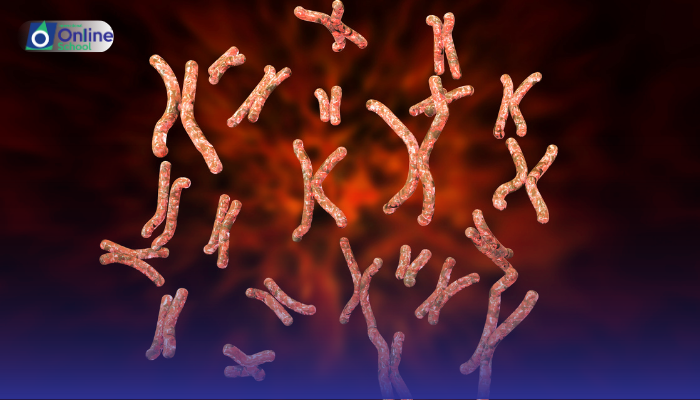
Learning Outcomes:
i. Understand the concept of sex-linked inheritance and its connection to the Y chromosome.
ii. Explore the unique role of Hollandric genes located solely on the Y chromosome.
iii. Analyze the impact of Y-linked and Hollandric genes on the development of male characters.
iv. Appreciate the complexity of sex-linked traits and their influence on individual variations and genetic counseling.
Introduction:
In the intricate dance of sex determination, the X chromosome holds the spotlight, guiding the development of female traits. But what about the Y chromosome? It might seem like a supporting actor, but its role in shaping male characters is far from silent. This lesson delves into the fascinating world of Y-linked and Hollandric genes, revealing their unique contribution to the mosaic of male identity and the complexities of sex-linked traits.
i. Y-Chromosome: Beyond Sex Determination
While the Y chromosome carries the SRY gene, the master switch for male development, it also harbors other genes that influence male characteristics. These genes, known as Y-linked genes, are passed from father to son, contributing to a range of traits like:
Hair growth: Some genes on the Y chromosome influence hair patterns, including scalp hair thickness, beard growth, and even male pattern baldness.
Body composition: Y-linked genes can play a role in muscle mass development, bone density, and fat distribution, contributing to the typical male physique.
Facial features: Jawline shape, Adam's apple prominence, and facial hair distribution can be influenced by Y-linked genes.
ii. Hollandric Genes: A Solo Act on the Y Chromosome
Among the Y-linked genes, a special group stands out: the Hollandric genes. These are rare gems found exclusively on the Y chromosome, meaning they have no counterpart on the X chromosome. This makes their inheritance unique and their impact on male traits undeniable. Classic examples include:
HYP gene: This gene codes for the enzyme responsible for earlobe hair growth, resulting in the familiar "hairy earlobes" trait observed in some males.
SRY-HPG gene: This gene influences sperm production and male fertility. Mutations in this gene can lead to infertility in males.
iii. Beyond the Binary: The Complexity of Sex-Linked Traits
Understanding Y-linked and Hollandric genes reveals the intricate nature of sex-linked traits. They are not simply binary, with male or female expression. Factors like gene interactions, environmental influences, and even chance can play a role in shaping the final outcome. This complexity highlights the importance of considering the multifaceted nature of sex-linked traits when interpreting genetic information and providing genetic counseling.
The Y chromosome, once thought of as a silent partner in sex determination, holds a treasure trove of genes that sculpt the unique tapestry of male identity. Y-linked and Hollandric genes, with their unique inheritance patterns and diverse effects, add another layer of complexity to the fascinating dance of sex-linked traits. By appreciating the intricate interplay of genes and chromosomes, we gain a deeper understanding of individual variations, the power of genetic information, and the crucial role of genetic counseling in navigating the complexities of human health and well-being.